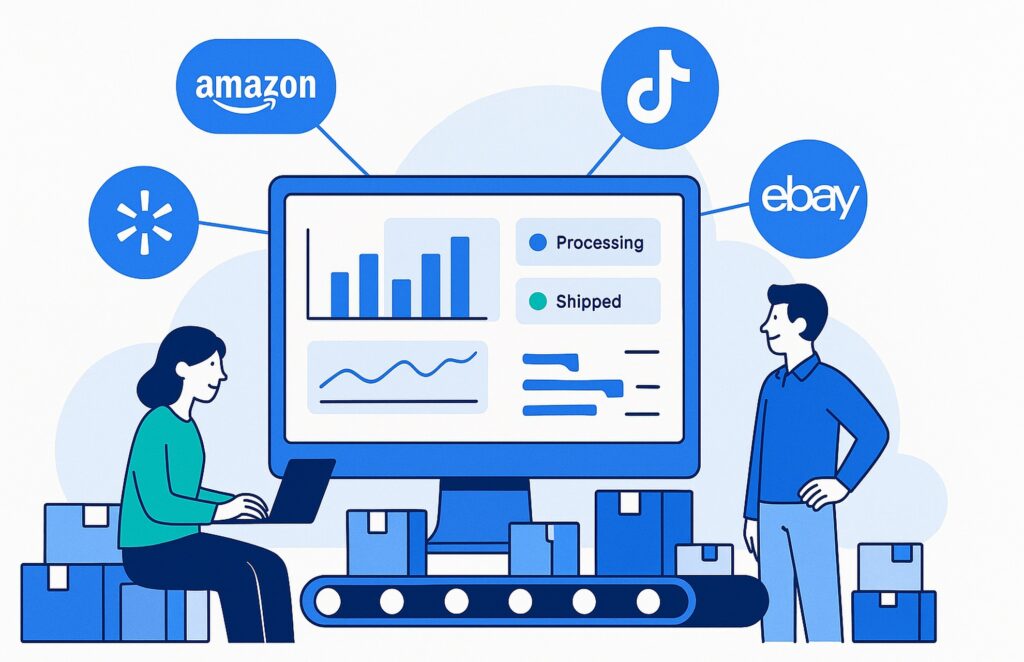- Blog
-
For Sellers
A guide on Amazon private label apparel brands & how you can compete
Amazon trimmed its apparel brands to the essentials. For sellers, that shift opens doors in places worth a closer look.

Amazon’s private label empire just got a lot smaller. After years of building up dozens of clothing brands, the retail giant slashed 27 out of 30 apparel labels in 2023. Today, fewer than 20 active house brands remain across all categories.
This dramatic downsizing might sound like good news for third-party sellers, but there’s a catch. The brands that survived the cut are the ones that actually worked. Amazon kept the heavyweights and ditched the underperformers, concentrating its firepower on fewer fronts.
Private label clothing still captures 9% of Amazon’s total apparel sales, compared to just 4% in Home & Kitchen and 3% in Consumer Electronics. So, understanding which brands dominate and where opportunities still exist can help you position your products strategically rather than walk into a buzz saw.
Amazon’s main private label apparel brands
Amazon Essentials emerged as the undisputed champion of the consolidation. This brand handles the basics that people actually buy regularly—t-shirts, underwear, socks, and everyday essentials. It’s designed to be the Kirkland Signature of clothing, offering reliable quality at competitive prices.
The numbers tell the story of Essentials’ dominance. Amazon Basics, which includes non-clothing items, accounts for 57.8% of all private label sales across the platform. When you add Amazon Essentials to the mix, these two flagship brands control the vast majority of Amazon’s house brand revenue.
Amazon Collection focuses on jewelry and accessories, filling a different niche entirely. This brand targets gift-buyers and fashion-conscious shoppers looking for affordable pieces that don’t scream “generic.” Amazon Aware rounds out the trio with sustainable and eco-friendly clothing options, capitalizing on growing consumer interest in ethical fashion.
The consolidation left these three brands with significantly less internal competition for resources and marketing support. Instead of spreading efforts across 30 different clothing labels, Amazon can now focus on making these remaining brands genuinely competitive with major national retailers.
The private label downsizing and what it means
The elimination of 27 clothing brands wasn’t just spring cleaning. It was a strategic retreat. Brands like Goodthreads, Daily Ritual, and Core 10 either disappeared entirely or got absorbed into Amazon Essentials. Some popular lines simply vanished without explanation.
Two forces drove this consolidation: poor financial performance and mounting regulatory pressure. Many of Amazon’s smaller clothing brands failed to gain meaningful market share despite having access to the platform’s vast customer base and advertising tools. When your own marketplace can’t make your brands successful, that’s a clear signal that something isn’t working.
The antitrust scrutiny added another layer of urgency. Congressional hearings and Federal Trade Commission investigations put Amazon’s use of third-party seller data under a microscope. Jeff Bezos himself admitted that Amazon couldn’t guarantee it had never violated its own policies against using seller-specific data for private label development.
This downsizing creates real opportunities for third-party sellers in categories where Amazon previously competed. Segments that lost their dedicated private label brands now have more room for independent companies to establish themselves. The reduced competition for search placement and advertising inventory makes it easier for smaller brands to gain visibility.
The change also signals Amazon’s priorities. The company kept the brands that generated consistent revenue and ditched experiments that weren’t paying off. This clarity helps sellers understand which categories Amazon considers strategic versus which ones they’re willing to cede to the marketplace ecosystem.
How sellers can compete with Amazon’s clothing brands
Amazon’s remaining apparel brands excel in commodity categories where price and convenience matter more than brand identity. Amazon Essentials dominates basic items like plain t-shirts, underwear, and simple athletic wear because customers care more about getting a good deal than supporting a particular brand story.
Your best opportunities lie in differentiated products that require brand trust, unique design, or specialized knowledge. Amazon Essentials can’t replicate authentic streetwear aesthetics, outdoor gear with specific technical features, or clothing tied to particular communities or subcultures. These categories require the kind of brand storytelling that generic house brands simply can’t match.
Here are some tips:
- Focus on building genuine customer relationships rather than competing on price alone. Amazon’s brands benefit from preferential placement in search results—analysis shows they occupied top spots about 19.5% of the time. You can counteract this advantage by creating products that customers specifically seek out and remember.
- Consider bundling strategies that make direct price comparisons difficult. Instead of selling a single plain t-shirt against Amazon Essentials, create curated bundles or unique variations that don’t have exact Amazon equivalents. This approach forces customers to evaluate overall value rather than just unit price.
- Enhanced brand content and external traffic can level the playing field significantly. Amazon’s private labels rely heavily on internal platform traffic and can’t build the kind of authentic brand communities that independent companies can create through social media and content marketing.
- Tools like ScoutX can help you identify categories where Amazon’s private labels have less market penetration. By analyzing search results and competition levels, you can spot opportunities in niches where Amazon hasn’t established a strong foothold or where its offerings don’t fully meet customer needs.
The key is avoiding head-to-head battles in Amazon’s strongest categories while capitalizing on areas where they’ve retreated or never established dominance. Smart positioning beats trying to out-Amazon Amazon.
The opportunities are bigger than they appear
Amazon’s private label downsizing created more space for independent brands than most sellers realize. The elimination of 27 clothing brands removed competitors that had structural advantages—preferential search placement, lower costs, and access to marketplace data that third-party sellers can’t match.
The brands that remain focus primarily on basic, commodity-style items where differentiation is difficult. This concentration leaves significant gaps in specialized categories, trendy segments, and products that require authentic brand positioning.
However, running a successful Amazon business against these house brands requires the right tools and strategy. Fortunately, Seller 365 provides everything you need to compete effectively, from ScoutX for product research to SmartRepricer for staying competitive on pricing.
When you can source smartly, optimize listings effectively, and manage your business efficiently, Amazon’s private label advantage becomes much smaller than it initially appears. Get started on your free trial today and hit the ground running.






















